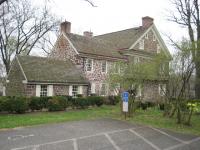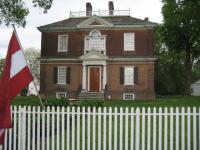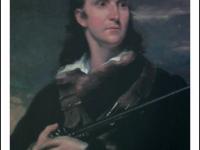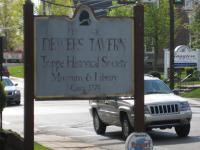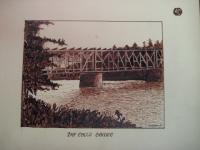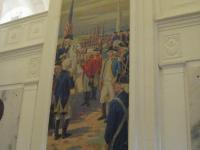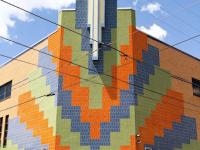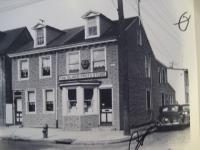Archival Adventures in Small Repositories
Archival Adventures in Small Repositories

Here's a "Six Degrees of Kevin Bacon" challenge: Construct a chain of association from Pottsgrove Manor, the home of Pottstown founder John Potts, to actor Kevin Bacon, with six links or fewer. Go!
Drinking alcohol in Colonial America was a popular past time with just about everyone. The Colonists thought alcohol could cure the sick, aid in digestion, and strengthen the weak. In England water was often polluted and caused illness, so the British replaced water with beer, wine, and other alcoholic beverages. The Colonists took their cue from the British and avoided fresh water, even though they did not have a problem with polluted water. They didn’t need much of an incentive to partake in the libations. Whether starting the day with a pick-me-up or ending it with a night cap, the Colonists knew how to party.
Happy Birthday, Mr. Audubon! Today is the 227th birthday of John James Audubon, the renowned artist, naturalist, and author best known for his breathtaking work Birds of America and for the wildlife protection society that took his name. We surveyed the archives at his first home in America, John James Audubon Center at Mill Grove.
Who was Henry Vanderslice? To learn more about the Berks County surveyor, sheriff, and Revolutionary War wagonmaster, you could read a published transcription of his 1777-1778 diary. Or you could head to the Historical Society of Trappe, Collegeville, Perkiomen Valley to view his recently discovered 1777-1780 diary!
The sport of rowing in Philadelphia has a long and venerable history. The gentlemen of our city would take to the water to compete for distinction and bragging rights. With the damming of the Schuylkill River, which was completed in 1821, the sport grew in size and structure in ways that these genteel men could not have imagined.
This blog post is a tribute to all the list-makers and note-takers, the compulsive diarists and scrapbookers, the newspaper-clippers and document-abstracters whose profligate personal papers fill the shelves of historical societies everywhere. This is a tribute to Edwin C. Jellett. Among his papers at the Germantown Historical Society is the following 1893 document: "How I kept House on $2.37 per week, or an experience of 68 days at experimental Housekeeping, by Edwin C. Jellett."
Our survey rate varies somewhat depending on the archives, but the Swedish Museum took a lot longer than most. Not that we minded -- the Swedish Museum is a great place to spend a day, or three! But it taught us a few lessons about what factors lead to a slower rate of surveying. As it turns out, a little bit of knowledge is a dangerous thing...
The Mummers Parade has been a cultural institution for Philadelphians since 1901. The tradition itself dates back even further, to the late 17th century. It started as a way of ushering in the New Year with masquerades and noise making, and has grown to an organized parade of elaborate costumes, dancing, and live music. The Mummers of today number over 20,000, and the parade attendees number over 125,000.
If you read my blog post about Old York Road Historical Society, you already know that the "small" in "Small Repositories Project" is somewhat variable. The Historical Society of Montgomery County, Pennsylvania is even bigger than Old York Road! Usually in these blog posts I focus on one particular collection or story, but there are so many extraordinary collections at MontCo, I was loath to choose just one. Here is a small sampling of a few of my favorites:
Bridesburg is a small neighborhood in northeastern Philadelphia, but it's a well-documented one thanks to the prolific efforts of photographer William H. Sliker and his son Charles. In the first decades of the 20th century, the Slikers traveled on a regular circuit through northeast Philadelphia. They advertised their services to local residents, who rushed to have their pictures taken while the photographers were in town. Then, the Slikers brought the negatives home to their Bridesburg studio to be developed.
- ‹ previous
- 18 of 21
- next ›
Image Permissions
Unless otherwise noted, all images in this blog post are property of the organization profiled, not the Historical Society of Pennsylvania. To reproduce any image or obtain a higher quality version, please contact the organization directly.

